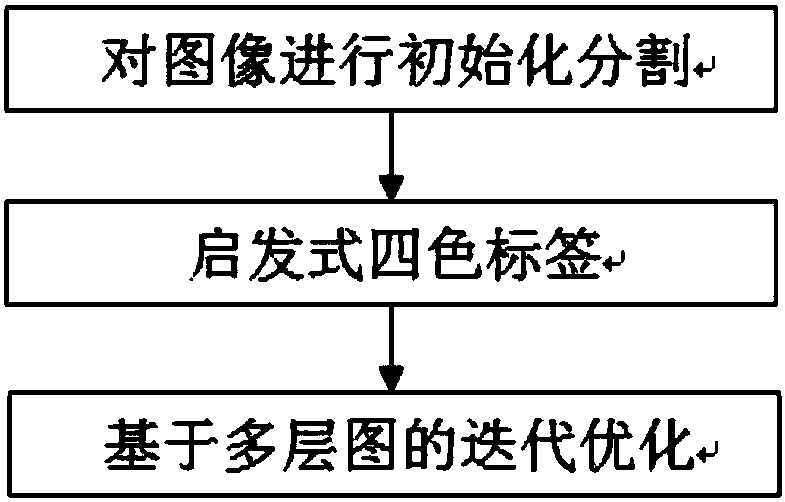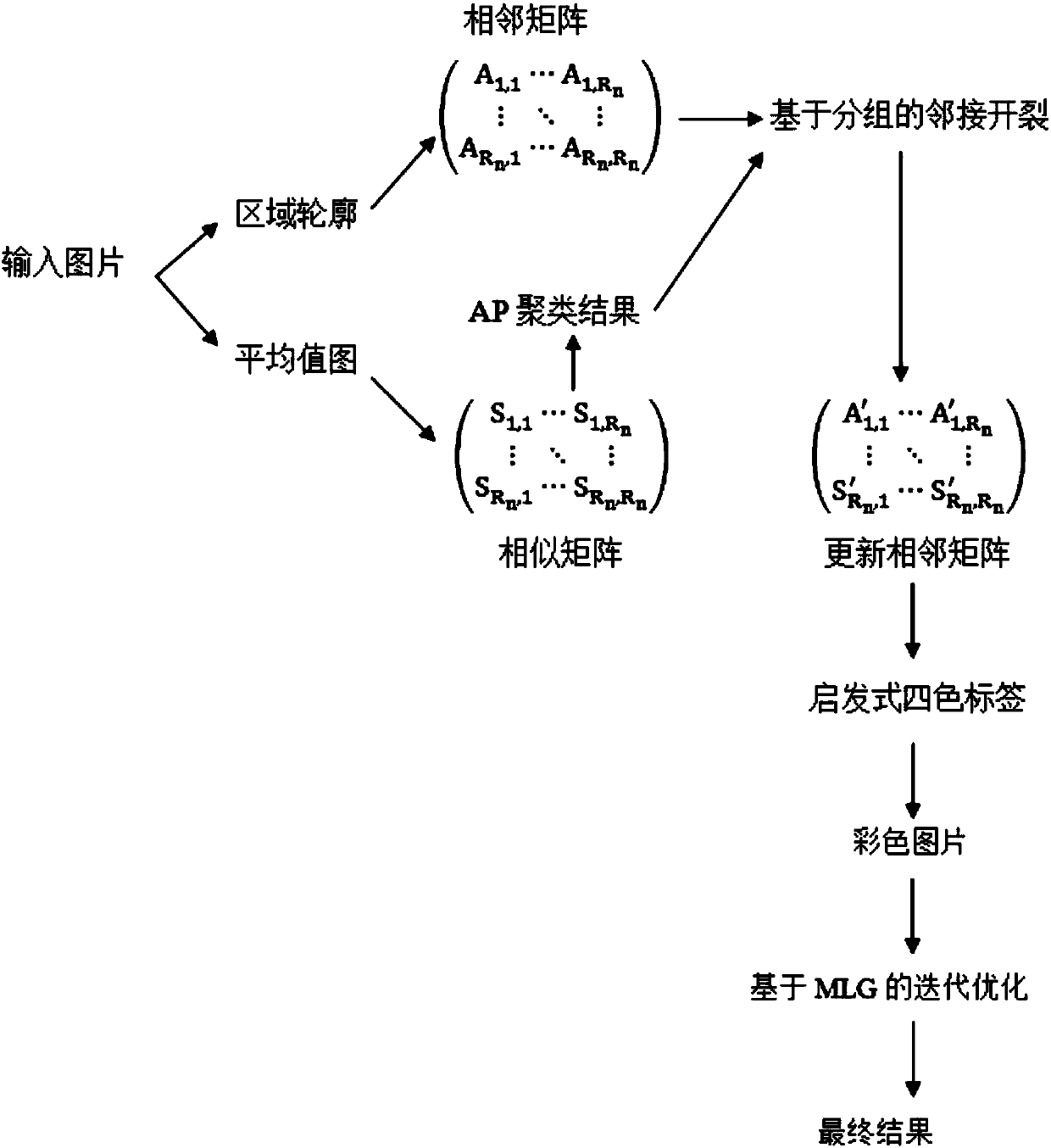Image segmentation method and system based on feature driven heuristic four-color label
An image segmentation, heuristic technique, applied in the field of computer vision
- Summary
- Abstract
- Description
- Claims
- Application Information
AI Technical Summary
Problems solved by technology
Method used
Image
Examples
Embodiment Construction
[0042] The present invention will be further described in detail below in conjunction with the accompanying drawings and specific embodiments.
[0043] see figure 1 As shown, the embodiment of the present invention provides an image segmentation method based on feature-driven heuristic four-color labels, comprising the following steps:
[0044] S1. Use the mean shift method based on clustering to initialize the segmentation of the input image, wherein the mean shift parameter setting is fixed;
[0045] The embodiment of the present invention uses images of BSDS300 and its extended version BSDS500 whose size is fixed at 481×321 (321×481), and mean shift is used as an initialization over-segmentation method, and its parameters are set;
[0046] Globally group the initial segmented images, analyze the distribution of the initial region of the feature space, and use the similarity matrix on the initially segmented region set as the AP (Affinity Prorogation, affinity) clustering i...
PUM
 Login to View More
Login to View More Abstract
Description
Claims
Application Information
 Login to View More
Login to View More - R&D
- Intellectual Property
- Life Sciences
- Materials
- Tech Scout
- Unparalleled Data Quality
- Higher Quality Content
- 60% Fewer Hallucinations
Browse by: Latest US Patents, China's latest patents, Technical Efficacy Thesaurus, Application Domain, Technology Topic, Popular Technical Reports.
© 2025 PatSnap. All rights reserved.Legal|Privacy policy|Modern Slavery Act Transparency Statement|Sitemap|About US| Contact US: help@patsnap.com


